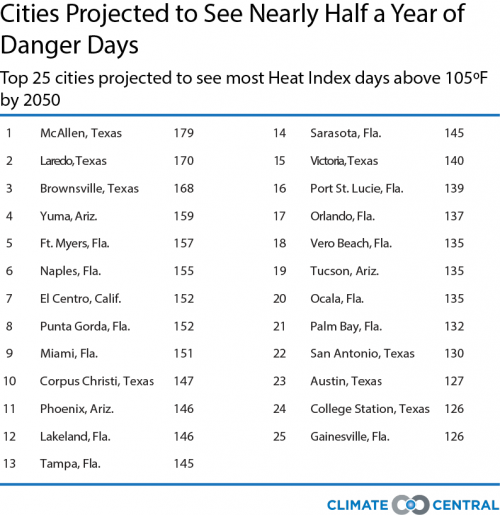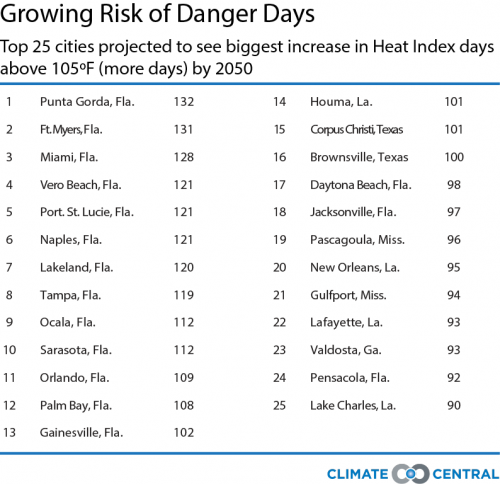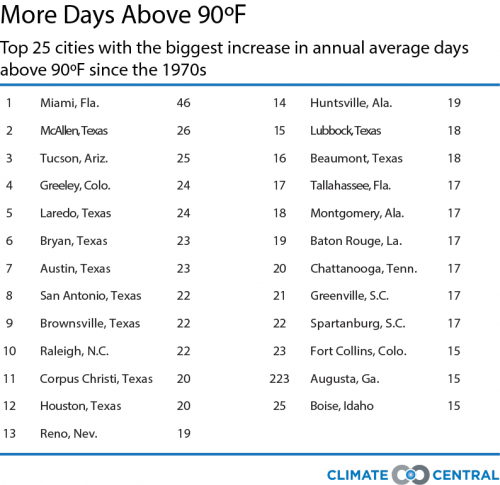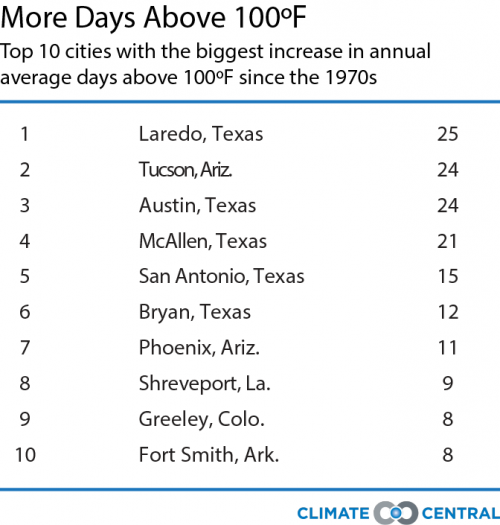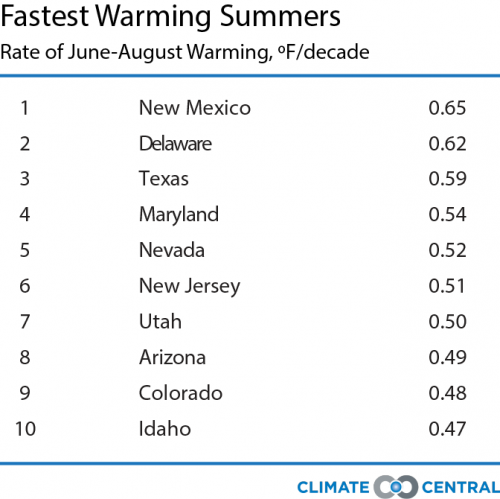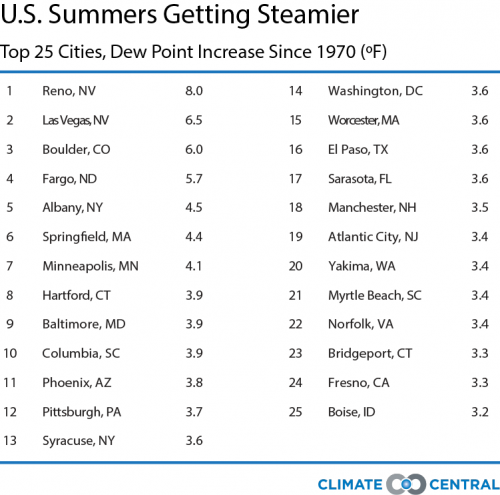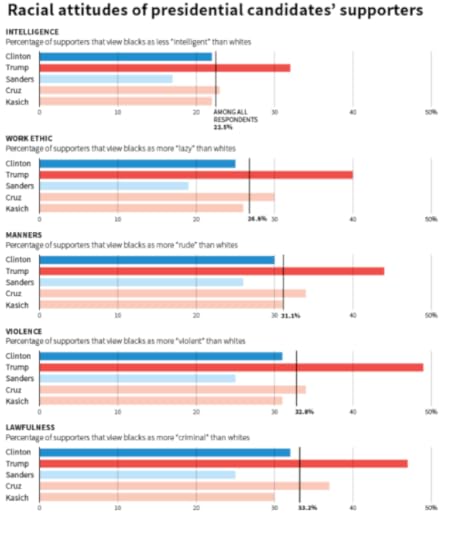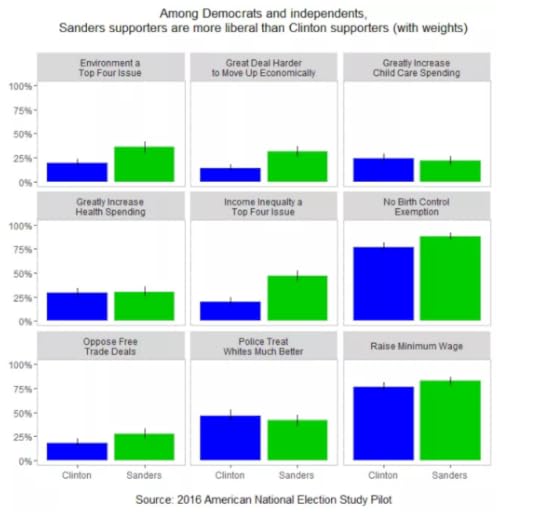Helen H. Moore's Blog, page 715
July 18, 2016
The RNC’s pop-culture wasteland: This Republican convention is seriously lacking in star power

Kid Rock; Scott Baio (Credit: Reuters/Eduardo Munoz/AP/Joe Kohen)
Entertainment and cultural figures are typically part of the political conventions both major parties put on. Culture can distract people from boredom, make them temporarily happy, and allow a party to define itself. This year, the GOP has chosen an electric guitar, inspired by the rock hall of fame, as part of its convention icon. But finding musician and actors who support the party’s likely nominee, Donald Trump, can’t be easy. The proof is that the big time talent this year seems to be pretty underwhelming.
So alongside the usual array of generic we-love-the-USA country bands, soap stars, the Cleveland bash includes the aggressive white rock-rapper Kid Rock and “Joanie Loves Chachi”/”Charles in Charge” star Scott Baio. (Country star Martina McBride, who is conservative but not particularly provocative, will perform as well.)
Kid Rock actually performed Sunday — along with Lynyrd Skynyrd — at a private concert. Rock is a Trump supporter who loves the Confederate flag, a symbol that Skynyrd has a decades-long relationship with. Whether the band and the rapper are racists is hard to say, and Skynyrd has probably been unfairly tarred with that brush. But they both have white supremacist followings. And Kid Rock goes out of his way to say offensive things about women and other musicians.
Over all, if the GOP establishment is trying to make this convention more moderate and civilized than their likely nominee, they are either not trying very hard or they are not in much control of the symbolism in Cleveland right now.
The arrangement with Baio is worth looking at. Many of us who grew up watching “Happy Days” have a place in our heart for the actor for the charismatic and light-hearted Chachi character, even if his ensuing shows are among the weakest of all ‘80s television.
Trump is either desperate for celebrity cred, or a genuine fan, because here is how the booking went down: “I was at a fundraiser for Mr. Trump the other night with my wife and he invited me to speak at the convention, which was completely unexpected and out of left field,” Baio has said. “He had given a speech and he was walking out. I looked at him and said, ‘Mr. Trump, Scott Baio,’ and he goes, ‘Oh my God.’ And he said to me, ‘Did you want to speak?’ And I went, ‘Here?’ And he goes, ‘No, no, no, at the convention.’”
Baio clearly disdains both Barack Obama and Hillary Clinton, and he shares Trump’s appetite for destruction. “It’s very simple, because when [Trump] speaks I understand him,” Baio said of his support for the mogul. “He speaks like I speak, he communicates with people very well. I want him, as any one person can do, to go into Washington and blow it up.”
Given the amount of literal American violence over the last few years, you’d think people speaking publicly would be a bit cautious about endorsing metaphoric violence.
But in any case, what’s most striking is that Baio is so much less substantial than previous GOP convention celebrities. Say what you like about the politics or personal behavior of Arnold Schwarzenegger (who spoke in 2004) or Clint Eastwood (who addressed an empty chair in 2012). The former served as governor (not terribly well) of the nation’s most populous state, and acted (badly, but still) in numerous films. The latter served as mayor of Carmel, acted in some of the greatest films in history, and has become a major director by any measure.
With Baio speculating on Fox recently that Obama may be “a Muslim sympathizer” and that he and Clinton want to “totally eliminate the United States,”tonight should be worth watching. In the best of all worlds, the actor will reprise his role from “Bugsy Malone” and show us all what a tough guy he is.
July 17, 2016
The “Cooks vs. Cons” dream: How the Food Network got back in touch with its aspirational roots

"Cooks vs. Cons" (Credit: Food Network)
Last Sunday night on the Food Network, a Polish folk dancer served Daphne Oz lasagna — though at the time, she didn’t know his occupation.
That’s essentially the plot of “Cooks vs. Cons,” a Food Network competition that pits two home cooks against two pros to see whose kitchen skills reign supreme. If you’re thinking “Wow, that sounds an awful lot like ‘Chopped.’” you’d be right, though “Cooks vs. Cons” takes the TV game show antics a step further by concealing the true identities of the competitors from both the judges and the viewers until the end.
The amateurs try to con the judges into thinking they are a real chef, while the pros simply try to prevent the “embarrassment” of being beaten out by a real-estate agent or a high school geography teacher. If at the end, the winner is a con, he is awarded $15,000. If a cook comes out on top, she’d make $10,000.
On the surface, “Cooks vs. Cons” is simply another in a long line of shows featuring chefs sweating over the clock and secret ingredients — which is a far cry from the network’s initial programming — but if you dig a little deeper, its premise might actually serve as a reimagination (albeit an unfilling one) of the channel’s original mission for a new generation.
Yes, Food Network was created to educate — but more than that, it was also meant to inspire confidence in home cooks. By tuning in to watch “Essence of Emeril” or “East Meets West,” viewers felt by the end of the episode they could cook like Lagasse or Ming Tsai. Thirty minutes with Ina Garten, and you too were ready to serve Jeffrey the perfect roast chicken and blow your entire paycheck at the local cheese shop. It was both empowering and aspirational television at its finest.
But over the last few years, the channel has moved from recipes to redemption challenges as cooking game shows take over an increasing number of time slots.
It’s been a gradual rebranding for the network — but one that has alienated many longtime viewers who can’t tolerate another Friday night with Guy Fieri as their culinary guide. For those viewers, The Cooking Channel now serves as a somewhat of a safe space where the hosts still stand and stir.
There is still afternoon “Food Network in the Kitchen” programming, which is reserved for the remaining shows dedicated to instructional cooking. But the only shows that promos identify, regardless of when you watch, are the “Food Network Nighttime” competition programs.
Entertaining? Perhaps.
Aspirational? Not particularly — unless you dream of sprinting down supermarket aisles on “Guy’s Grocery Games.”
Yet with the introduction of the show “Cooks vs. Cons,” Food Network has solidified their new brand of aspirational television. Now young home cooks don’t have to merely take tips from the professional chefs; they can ostensibly beat them at their own game. The Network has been building to this for a while now — like with special episodes of “Chopped Pros vs. Joes” — but “Cooks vs. Cons” totally teases the concept out.
And so far, it’s been pretty successful. According to Variety, the show “notched double-digit increases in viewers between 25 and 34” during its six-episode preview run. In a recent Food Network Q&A, Zakarian explained why he thought fans found this show so craveable:
“It’s on everybody’s mind that they all want to be a chef,” Zakarian said. “So it’s very fun for people to imagine trying to trick someone like myself and two judges into [believing they’re] a chef, so I think it really sets up their interest first.”
In that sense, “Cooks vs. Cons” is aspirational for today’s audiences. Viewers can dream of being the one to fool the judges with their superior cooking skills.
And because of this premise, the show also hearkens back to Food Network’s original goal of making home cooks believe that they can dish it out as well as a professional chef. Though considering the network’s current lineup, they’ll have to find somewhere other than the Food Network to learn how to do so.
For that reason, there’s a Food Network purist inside me that hopes the show’s success will create a demand for for more instructional programming, like in the good old days when Alton Brown taught us things on “Good Eats” instead of running around in a shrunken camp counselor uniform as host of “Camp Cutthroat.” After all, in order to beat the pros, it would make sense to learn from them.
But for now, it seems that “Cooks vs. Cons” is the interpretation of the Food Network mission that viewers want to see — and as Zakarian says in the show’s promo, “that truth is hard to swallow.”
“Cooks vs. Cons” second season airs Sunday nights at 10.
“Beautiful is a woman being her true self”: Why I declined reconstruction after my double mastectomy
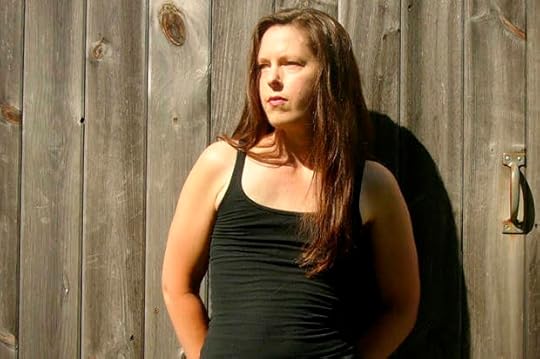
A photo of the author (Credit: Theo Congdon)
Early on the morning of my double mastectomy, I wash my chest with a noxious-smelling pink soap that kills germs before surgery. In the shower I scrub, rinse and repeat, dawdling under the hot water, not quite ready to face this day. My fingertips trace the lump in my left breast for the millionth time since discovering it three months ago. On my doctor’s recommendation I’ve been doing chemo to shrink the tumor before surgery. Four rounds so far, but the lump doesn’t feel much smaller to me.
Frankly, I’m terrified about what the mastectomy is going to reveal. According to scans, my organs are free of cancer, but it has spread to the lymph nodes in my armpit. Today we’ll find out how many, and whether or not my ovaries are clear. They’re also being removed because, to my shock, I’ve tested positive for a BRCA2 mutation. This faulty gene is what caused me to develop breast cancer and puts me at increased risk for ovarian cancer.
All week I’ve had a recurring dream that I’m in my car, driving down a steep hill, quickly picking up speed, and when I go to apply the brakes, there’s no pedal. I always wake stomping my foot and yelling. My husband, Theo, holds me until I calm down, whispering reassuring words in my ear even though he’s scared shitless too.
When the water runs cold, I reluctantly step out of the shower, wrap myself in a towel and tiptoe into the bedroom so I don’t wake Theo. It’s not dawn yet but he’s already up, dressed and ready to head to the hospital. He stands in front of me wearing a sad, worried expression. We both sigh. I unwrap the towel.
“Well, it’s been real,” he tells my boobs. I laugh. Eighteen years together and we’ve cracked each other up through everything, even this. Even things worse than this.
“I’ve had a lot of fun with you two,” he says. Then his voice cracks and his face crumples. He kneels on the floor and gently kisses each of my breasts. Kisses them goodbye.
*
The women’s surgery center at the hospital is decorated like a spa with soft lighting, plush white robes and stacks of expensive magazines on every table. As if I’m here for a mud bath rather than the removal of major body parts. Actually, I appreciate that whoever designed the space tried to make it comfortable, to take the edge off the terror of this experience. I sit in my robe on a deep couch next to Theo, waiting for the surgeon and reminding myself to breathe.
Months ago, at my first pre-op meeting with Dr. C, he launched into a spiel about the various options available for reconstruction after my mastectomy.
I heard him out and thanked him for the information. “But I’m pretty sure I don’t want reconstruction,” I said.
“Oh.” He raised his eyebrows in surprise. “May I ask why?”
I explained to him that, much as I like my breasts, they aren’t really integral to my sense of self or womanhood. I’ve never gotten a lot of attention for my rack, so it’s not a feeling I’ll miss. I do, however, know how it feels to get pleasure from my breasts and that’s something no reconstructive surgery can restore. For all the upbeat talk about new-and-improved tits after a mastectomy, the fact is that those big perky numbers will have little or no sensation.
“It’s just not worth it to me,” I told Dr. C then. “The extra surgeries, the risk of infection. I’ve been through enough with the chemo, and soon I’ll be in menopause from having my ovaries removed, and then radiation … My gut is telling me to let my body heal and just … be what it is.”
Dr. C listened respectfully. He didn’t object or pressure me into getting reconstruction the way I’ve heard some surgeons do. “It’s your decision,” he said. “But remember, you can always change your mind down the road.”
Since then, every single doctor I’ve seen – oncologist, gynecologist, radiation specialist – has echoed my surgeon’s assurance that I can have implants put in later. Later, as in, after I’ve gotten over the trauma of a Stage III breast cancer diagnosis, of testing positive for a BRCA mutation even though there is no strong history of cancer in my family. These doctors all assume I will want implants once I’ve finished treatment and am ready to “get back to normal.”
But there is no normal anymore. Given the aggressiveness of my tumors, I’m not sure I’ll be here five years from now. Time is precious. I don’t want to spend any more of it than necessary in surgery, or recovering from surgery, or sitting in a waiting room like this one, no matter how comfortably decorated. I have other shit to do. Finish the book I’ve been working on for the last decade. Get out of New York, move to Maine with Theo and plant the gardens I’ve always dreamed of. Allow my body to get strong and expend its energy on keeping stray cancer cells at bay.
Finally Dr. C breezes into the waiting room, bright eyed and freshly shaved. He perches on the coffee table in front of Theo and me to go over the details of the procedure again.
When he’s finished, I clear my throat and say, “Just so you know, I’m not planning to get implants down the line. I wanted to mention it in case that makes any difference in how you do things today.”
“It does, actually. Normally I would leave extra skin so there’s room for tissue expanders to be inserted.”
“Uh, no, don’t do that,” I tell him. “You can sew me up nice and tight.”
“Okay.” He pauses. “If you’re sure.”
I check my gut one last time. “I am. I really am.”
*
Now, five years later, luckily cancer-free and back to “normal,” I am still just as sure about my decision to go flat. Thanks to Dr C’s handiwork, the scars are hardly visible. It’s as if my breasts have been erased. Sex without them is different, but I imagine sex would also be different with two numb implants on my chest. I’m glad that I didn’t saddle my body with foreign objects in order to conform to our society’s current porn-ified standard of beauty. To me, what’s beautiful is a woman being her true self. I happen to be a woman without breasts or ovaries, and anyone who doesn’t like it can lump it, so to speak. Of course, that’s easy for me to say. I have a husband who accepts me as-is and didn’t want me to get implants. I like to think I would’ve made the same decision even if I were single, but I’m not sure that’s true. Dating without boobs seems like a daunting proposition.
My thought process might also have been different had I tested BRCA2+ before cancer struck and gotten a prophylactic mastectomy instead. Maybe if my body hadn’t been ravaged by chemo I would’ve been more receptive to reconstructive surgery, more willing to risk the possible complications, like infections and loss of strength and mobility in my upper body. If I were in the same position as, say, Angelina Jolie.
But I’m no Angelina Jolie. I don’t look like her or live like her. As a professional gardener in rural Maine, it’s more important that I be able to wheelbarrow a load of compost up a hill than look good in a low-cut gown. Whenever I do dress up, I just stick falsies in a bra or else wear pants so crazy and colorful no one notices my flat chest.
That works fine for me, but I don’t judge other women for making different choices. None of this is easy or clear-cut. I know women who’ve had reconstruction and been satisfied with the results, and I know women who’ve been miserable afterwards.
One of my friends from the chemo infusion room had implants that leaked into her chest and caused a major infection that required multiple trips under the knife.
“The only reason I got these is because everyone said I’d be happier with them,” she told me. “But I’m not fucking happy.” She ended up having the implants removed and was glad she did. Another friend from chemo loves her implants and feels they helped her reclaim her life after cancer treatment. To each her own.
With the recent rise in BRCA testing and early cancer detection, more women than ever are facing the reconstruction dilemma. It would be great if we could all make this decision based on our own gut instincts about what’s best for our bodies and lifestyles, to not be so affected by the opinions of other people – whether pushy doctors, tit-man husbands, or our breast-obsessed society at large.
Easier said than done, though. A few years after my mastectomy, I went in for a routine follow-up with Dr. C and mentioned how a female doctor had recently asked if I was “ready for reconstruction” yet.
“She seemed skeptical when I told her I’m fine without implants,” I said. “But it’s true. I don’t feel maimed or disfigured at all. I was a whole self before I grew boobs and I’m a whole self now that they’re gone.”
“Plus you’re feminine as hell,” Dr. C chimed in.
I blushed at that. May have even giggled. That afternoon I walked out of his office with extra pep in my step, feeling more attractive than I had since, well, to be perfectly honest, since my boobs were cut off.
I’m not even sure what the doctor meant when he called me “feminine.” Maybe just that, since finishing chemo, my hair had finally grown past my shoulders, or maybe he was just trying to be nice. I don’t know, but I thought a lot about his comment over the following months, always with a flush of pleasure. Because a man other than my husband had approved of my body, had deemed it womanly enough. And his opinion meant more to me than I like to admit.
5 feminist history reasons to visit Cleveland — whether you’re protesting, attending or working the Republican National Convention

Amelia Earhart (Credit: AP)
Cleveland is having a bit of a moment. The city just won their first professional sports championship since 1964 and will soon be hosting what might be most incendiary political conventions in decades.
But beyond LeBron, Trump’s upcoming visit and the booming food scene, Cleveland is also home to a surprising number of sites that celebrate women’s history and accomplishments. Here are a few suggestions from a native Clevelander that are definitely worth the visit if you’re in town attending, working or protesting the Republican National Convention.
1. The International Women’s Air & Space Museum
When you think of aviation history in Ohio, typically the Dayton area — home of the Wright brothers — comes to mind. But chances are, you might not have heard of Orville and Wilbur Wright if it weren’t for their charming and chatty sister Katharine, who essentially functioned as the publicist for her shy brothers. You can learn all about Katharine (and see one of her dresses on display), along with Bessie Coleman, Viola Davis — and yes, Amelia Earhart — at the International Women’s Air & Space Museum in Cleveland. Women in space also feature prominently, including a new exhibit entitled “This is Mission Control…Women in Mission Control,” featuring NASA’s female mission controllers, and a permanent display on the Mercury 13 Women. The museum began as a committee of Ninety-Nines — an international organization for women pilots founded in 1929 headed by Amelia Earhart — who wanted to preserve artifacts and history of women in aviation. Located in Cleveland’s Burke Lakefront Airport since 1998 — itself an interesting place to view a midcentury airport interior — the museum is free and open from 8 a.m. to 8 p.m., seven days a week.
2. The History of Contraception Museum at the Dittrick Museum of Medical History
Fun fact: Cleveland is home to the world’s largest collection of contraceptive devices. More than 650 items come from the collection of Percy Skuy — a pharmacist past president of the Canadian company Ortho Pharmaceutical — and were donated to the museum in 2004. The exhibit features everything from folk contraceptive methods — including douching with Lysol or eating poisonous herbs like pennyroyal or drinking tea made from beaver testicles — to today’s conventional methods, such as the condom, IUD and birth control pill. Although not specifically dedicated to women’s history, the museum examines the politics of birth control, including the impact of criminalization and multiple waves of the feminist movement. There is also a display of stories of some of the women from Cleveland and the roles they played in making contraception legal, safe and accessible. The Dittrick Museum of Medical History is open to the public from 9:00 a.m. until 4:30 p.m., Monday, Tuesday, Thursday and Friday.
3. Union Chapel
Located on a country road in the township of Newbury, about an hour east of downtown Cleveland, Union Chapel was once one of the most important places in the women’s suffrage and dress reform movements. Also known as the Free Speech Chapel, the one-room white wooden structure was built between 1856-1858, when future president James A. Garfield was not permitted to speak at the Congregational Church across the street, out of fear that his speech would be too controversial. According to its deed, the chapel was to be free, open to the public and not used for the exclusion of anyone by serving as “public hall or meeting house for literary, scientific, moral and religious purposes and lectures on all useful subjects.” Since its establishment, Union Chapel served as a hub of women’s suffrage, hosting public figures including Susan B. Anthony, Elizabeth Cady Stanton, Louisa May Alcott and Lucy Stone. In 1871, nine women cast their ballots in the chapel, making them Ohio’s first women voters. The chapel is open for tours May through October, by appointment only, by calling the Geauga Park District at 440-286-9516.
4. Lynn Hershman Leeson: “Cyborgs and Self-Promotion” Exhibit at the Cleveland Museum of Art
Cleveland native Lynn Hershman Leeson began creating her pioneering art examining the intersection of humans and technology in the 1960s. This exhibit — which features photography, video and sculpture — marks Hershman Leeson’s first appearance at the Cleveland Museum of Art since 1968. One of the featured works, Seduction of a Cyborg, depicts a vision of the future where women are lured into becoming cyborgs through manipulated computer chips. Her exploration of issues surrounding transhumanism combines digital art with sharp social commentary, highlighting humans’ ever-changing relationship with technology. The exhibit runs through Monday, August 8, in the Video Project Room, Gallery 224a in the Cleveland Museum of Art.
5. “Louder than Word: Rock, Politics & Power” exhibit at the Rock & Roll Hall of Fame
Although not focused specifically at women, the Rock & Roll Hall of Fame’s current exhibit on rock, politics and power features some of the women whose music and activism made a lasting impact on society.The exhibit utilizes interviews and interactive tools, photography and artifacts that center on eight topics: feminism, LGBT issues, civil rights, war and peace, censorship, political campaigns, political causes and international politics. For example, the display features the work of women whose music influenced the both the women’s and civil rights movements, like Nina Simone and Aretha Franklin. Also on show will be the guitar used by John Lennon and Yoko Ono during their Montreal “Bed-in for Peace,” when they introduced the anti-war anthem, “Give Peace a Chance.” More recent artists will also be featured, including feminist punk rock protest group, Pussy Riot, who utilized their music as a form of social activism in Russia. During the Republican National Convention, July 18-21, 2016, the Rock Hall will be open from 10 a.m. to 3 p.m. with free admission.
America is too damn hot: U.S. faces dramatic rise in extreme heat and humidity

A boy walks near water spraying from an open fire hydrant in Brooklyn, N.Y., on July 5, as temperatures soared toward 100 degrees.
This article originally appeared on Climate Central.
Across the United States, we’ve hit the dog days of summer. Most regions are now seeing their hottest temperatures of the year, and the combination of heat and high humidity sends most people running for a cold drink, some shade or an air conditioner.
Heat is the No.1 weather-related killer, and as carbon pollution continues, global temperatures will keep climbing, bringing hotter summers and more dangerous heat.
Climate Central’s States at Risk project analyzed historic trends in summer temperatures since 1970 as well as projections for future extreme heat for hundreds of metro areas across the lower 48 states. Using several measures, our findings show that most U.S. cities have already experienced large increases in extreme summer heat and absolute humidity, which together can cause serious heat-related health problems.
We found that scores of U.S. cities home to tens of millions of people will face dramatic increases in dangerous and extreme heat days by the middle of this century if current greenhouse gas emissions trends continue.
The hottest parts of the country, including Texas, the Southwest and Florida, have already experienced large increases in extreme heat days, including days over 90°F, 95°F and 100°F, as well as rising levels of humidity that make hot days feel miserable and extremely hot days downright dangerous. Cities in those same states are facing the biggest projected increases in dangerous heat over the next several decades.
Florida faces by far the greatest increase in the dangerous combination of heat and humidity over the next several decades. The 13 metro areas in the country projected to see the greatest increase in danger days by 2050 are all in Florida. Every one of these cities is projected to see an increase of more than 100 dangerous heat days — when the heat index, a combination of heat and humidity, is more than 104°F — by that time. This will only accelerate changes already seen in Florida, where Miami tops the nation with the greatest increase in annual average 90oF days per year since 1970 with 46 more such days. McAllen, Texas, is second, with 26, followed by Tucson with 25.
Texas tops the nation in extreme heat, with six of the top seven cities with the greatest increase in 95°F days, including Austin, San Antonio and Corpus Christi. In addition, three Texas cities lead the nation in projected danger days by 2050. Nearly half the year, between 168 and 179 days, will be what the National Weather Service considers dangerous heat days by 2050 in McAllen, Laredo and Brownsville-Harlingen.
Arizona is also hard hit, with Phoenix projected to see 146 danger days by 2050, Tucson expected to see 135 and Yuma projected to have 159. As a harbinger of these changes, Tucson now has 24 more days above 100°F on average per year than in the 1970s — the second largest increase in the nation.
Impacts of extreme heat
Extreme heat and the combination of high heat and humidity pose serious risks for human health. According to the National Weather Service, heat is the No.1 weather-related killer in the United States — more than tornados, floods and hurricanes — and it is estimated that between 600 and 1,500 heat-related deaths occur in an average summer. Individual heat waves can be even more deadly. The 1995 heat wave in Chicago is estimated to have led to more than 700 deaths and in excess of 1,000 more hospital admissions than normal.
This deadly risk is not likely to go away. By the end of the century, heat-related deaths are projected to increase by thousands to tens-of-thousands each year in the country. Those most at risk of heat-related health impacts are infants and young children, elderly over 65, those already ill, athletes and outdoor workers. But everyone is potentially at risk.
Elevated heat, especially along with high humidity, makes it difficult for the body to cool itself. In addition to increasing the risk of mortality, heat can cause problems throughout the body. It can range from dehydration, cramps, exhaustion, dizziness, vomiting and heat rash to more serious issues involving kidney failure, heart issues and exacerbation of respiratory issues. These heat impacts also provide a challenge to the healthcare industry with increased hospitalizations, doctors’ visits and insurance claims.
High heat also impacts other sectors and infrastructure. Stagnant air often occurs during periods of elevated heat and allows dangerous levels of air pollutants to build up. High temperatures also directly provide conditions conducive for producing harmful ground-level ozone. Periods of extreme heat can wither crops and exacerbate drought conditions, greatly impacting agriculture. Blackouts often accompany heat waves as the need for cooling puts a heavy strain on the power grid. Heat waves can also lead to harmful algal blooms and promote other bacterial growth in bodies of water, and lead to degraded fish habitat, such as for species that require cooler streams and rivers.
More danger days are coming
The combination of hot temperatures and high humidity creates dangerous conditions for humans. The National Weather Service defines as dangerous any day when the heat index exceeds 104°F. Under these conditions, sunstroke and heat exhaustion are likely, and physical activity or being outside for long periods is risky, potentially leading to heat stroke. These dangerous heat days pose the greatest threat to kids, the elderly and people who don’t have easy access to air conditioning.
We analyzed 360 of the biggest U.S. cities to see how the average number of danger days is projected to increase in the coming decades. The projections draw on 29 global climate models that have been downscaled across the continental U.S. to represent local climate conditions.
The top 25 U.S. cities expected to see the most danger days by 2050 are:
The 25 U.S. cities projected to see the biggest increase in danger days over current conditions are:
More extreme heat days since 1970
Even in the absence of high humidity, extremely hot days pose a considerable health threat, particularly under prolonged exposure. Across most of the country, temperatures have increasingly been exceeding 90°F, 95°F and 100°F since 1970.
Our analysis of trends in extreme heat days is based on annual counts of 90°F, 95°F and 100°F exceedances in the country’s largest 200 cities. The hottest cities are seeing the biggest average increases in extreme heat days in general.
The top 25 cities that have seen the biggest increase in annual average days above 90°F since 1970:
The top 25 cities that have seen the biggest increase in annual average days above 95°F since 1970:
The top 10 cities that have seen the biggest increase in 100°F days are:
Faster warming summers
Since 1970, summers have been warming in 45 of the lower 48 states. In many of these states, this warming is driven largely by nighttime temperatures getting hotter.
Steamier summers since 1970
As temperatures rise, evaporation increases, causing increased water vapor in the air. That extra moisture makes the air feel muggier and can make it a lot more difficult to tolerate the heat because our bodies have a harder time keeping cool through perspiration. As summers warm across the country from increasing greenhouse gases, cities are also getting sticker.
Climate Central analyzed how the average summer dew point has changed in 200 major U.S. cities since 1970 (the dew point is a measure of how much moisture is in the air). We found that 87 percent of those cities have experienced an overall increase in their average summer dew point over the past 46 years, indicating that there is typically more moisture in the air on hot summer days now than there used to be.
The top 25 cities seeing the largest increase in summer air moisture since the 1970s are (several of which are among the fastest warming cities in the country):
Summers by 2100
If greenhouse gas emissions continue unabated, global warming over the rest of this century is projected to make summers across the entire country much hotter. Climate Central analyzed how hot average daily summer high temperatures are projected to climb by 2100 and compared those future temperatures to today’s locations. Examining 1,001 cities, we found that summer heat is projected to increase 7-10°F, but some cities could see summers an average of 12°F warmer than today.
Analysis by Alyson Kenward, Ph.D, Jennifer Brady, James Bronzan and Todd Sanford. Read full methodology. Find the interactive, footnoted version of this article here.
Jail for sharing your Netflix password? Understanding the law that could make it a federal crime

(Credit: Jinga via Shutterstock)
It’s become so common that it’s almost a joke. One person has a Netflix account and three other people are using it. A recent court ruling found that because of a law called the Computer Fraud and Abuse Act (CFAA), using someone else’s password could be considered a federal crime with an extremely harsh punishment. Someone who violates the CFAA can face decades in prison and large fines.
“The CFAA was intended to be an anti-hacking statute. It should be targeting the circumvention of technological access barriers—people breaking into computers—and the law is so vague and so confusing that it’s gone really far beyond that,” Jamie Lee Williams, a legal fellow for the Electronic Frontier Foundation, told Salon.
The case is called United States v. Nosal. David Nosal was a former recruiter with an executive search firm when he at one point decided to use a former coworker’s password to get into the firm’s database. That might seem innocent enough, but the prosecution is using the CFAA to allege that Nosal’s use of the password was unauthorized and thus a crime. The U.S. Court of Appeals for the Ninth Circuit found it was indeed a violation of the CFAA.
Judge Margaret McKeown of the ninth circuit argued that this case is not about sharing password for common services like Netflix, and that it’s simply about an employee “accessing trade secrets” through a “back door.” However, the reasoning used in the case was broad and could affect common password sharing.
“Their reasoning was so broad that it would criminalize any type of use of someone else’s password, even with their permission, so long as you didn’t have the computer’s owner’s permission,” Williams said. The “computer owner” in the hypothetical case would be Netflix, as it owns the computer systems running the website.
Another case dealing with the CFAA received a ruling last week, and it only added to the confusion around the law. A case called Facebook v. Vachani dealt with a company called Power Ventures that was having people give it their Facebook username and password so their timeline could be integrated into its social media aggregating service.
Facebook attempted to stop this practice by issuing a cease and desist letter to Power Ventures, and a lawsuit against Power Ventures arose when it was not stopped. The ruling in that case showed a third party may be able to legally use someone else’s password if they’re authorized, but it also said that authorization can be revoked. Exactly how it is supposed be revoked remains a mystery. How the CFAA is meant to work continues to get more confusing.
The CFAA received much scrutiny and attention when it was used against Aaron Swartz, the person who helped create the RSS feed, co-founded Reddit and did so much more. Swartz was charged under the CFAA when it was discovered he was using a program to download millions of academic journals from the JSTOR database. Facing a felony, crippling court expenses and much more, Swartz committed suicide before his case was over. He was 26 years old.
A piece of legislation called “Aaron’s Law” attempted to curb some of the issues with the CFAA, but it has received little attention and hasn’t gone anywhere in Congress. Swartz’s death remains a tragic reminder of how lives can be destroyed by misinterpreted laws.
It is clear to many who advocate for Internet freedoms that the CFAA needs to be reformed. Besides password sharing, someone can be charged under the law for violating a website’s terms of service in various other ways or for numerous other innocuous actions.
Williams said we need a reform that makes the CFAA about stopping hackers, not criminalizing standard behavior. “We may need reform that specifically says that password sharing is not a crime… to be more clear about what is unauthorized access,” she said.
Until the CFAA is reformed, contradictory court rulings will likely continue to be put out in the world, and people who probably shouldn’t be considered criminals may face draconian prison sentences.
“We are at the whim of prosecutors to decide whether to bring a CFAA case,” Williams said. “It doesn’t matter if the prosecutor has promised to use the law responsibly, that’s not a reason for adopting an overly broad interpretation of a statute. We need to interpret our laws clearly to give people notice of what is and is not criminal.”
When simply using a computer for its understood purpose becomes a crime that can put you in prison for a large portion of your life, one has to wonder who the law is truly serving.
Waste of a beer: Giving the spent grain from your favorite brews a second life
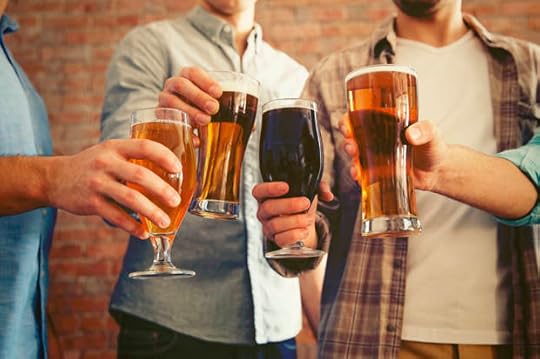
(Credit: Africa Studio via Shutterstock)
“Eat beer,” invites San Francisco’s Regrained, the brand that turns spent beer grain into granola bars. And as tasty as this company’s treats are, its founders have more in mind than simply filling lunchboxes or fueling hungry hikers: “Roughly 40 percent of the food that we grow is never consumed,” says Regrained co-founder Dan Kurzrock. “What we’re talking about more broadly is closing a nutrient loop.”
Kurzrock’s concern has to do with the fact that there are now 4,500 breweries in the U.S. — more than we’ve ever had in this country since the previous record of 4,131 was last set in 1873. This is great news for beer drinkers, but could be a problem for the entire world: like all other manufacturing companies, breweries deplete natural resources and generate byproducts that, when left unchecked, can threaten the health of our environment. Up to 85 percent of these brewery byproducts consist of spent grain: the malt and adjuncts left over after sugars and flavor have been extracted from grain by soaking and draining it. But this “waste” still has plenty of nutritional – and financial – value, and brewers and entrepreneurs alike are scrambling to find the most efficient and lucrative ways of converting it from a liability to a cash cow.
New Belgium Brewing, the fourth-largest craft brewery in the country, produces close to a million barrels of beer each year between two facilities. New Belgium’s original Fort Collins, Colorado, brewery produced 73 million pounds of spent grain last year, all of which was sold to a local farmer overseeing about 8,000 cattle. “Some studies show that giving spent grain to cows actually has the greatest offset potential for greenhouse gas emissions because you’re not requiring that weight in grain to be grown on the field specifically for cattle,” explains Katie Wallace, assistant director of sustainability at New Belgium. “Because of the synthetic based fertilizers, and the tilling, and the tractors, it’s a carbon intensive process to grow grain.” Thus, the exchange lowers the environmental impact of two industries simultaneously.
However, New Belgium faces a bit more difficulty at their second location in Asheville, North Carolina, where giant cattle farms are nowhere to be found. “It’s hard to get one farmer to be able to take the load that we’re producing,” explains Nick Ampe, New Belgium’s Environmental Health and Safety Specialist. “We need to be able to spread it out around to a lot of [farmers], so we’ve partnered with WNC Communities.” Farmers can pay a small fee to join this local nonprofit’s Brewer’s Grain Alliance, which enables the farmers to purchase wet brewer’s grain at a reduced cost. “We could get a higher price for our brewer’s grain and send it out of the state, but all of our grain stays within a maximum of a 100 mile radius of Asheville,” Ampe says.
Through all of its efforts across both locations, New Belgium is able to divert 99.8 percent of its waste from landfills. Their environmental efforts generally go above and beyond those of most breweries, but as Katie Wallace also points out, “Any brewery will have a high waste aversion ratio because you can get paid… for finding a new home for your spent grain. It’s just a smart business decision.”
It’s not so simple for breweries in urban settings, though: Most farmers aren’t willing to pick up grain in emission-spewing trucks from breweries in busy cities with narrow streets, traffic, parking and tolls. In many metropolises, unaccounted-for spent grain must go to a landfill, where organic matter breaks down into methane, the atmospheric impact of which is more than 25 times worse than carbon dioxide. For the minority of cities that do have access to one of fewer than 350 composting operations in the U.S. that process food waste, aerobic decomposition from composting still emits CO2 into the atmosphere. And most breweries can’t afford to pay the city to continuously compost thousands of pounds of spent grain, anyway.
Such is the case for Seattle’s Fremont Brewing, an urban brewery that goes through up to 14,000 pounds of dry malt each day. Fremont has been lucky enough to find a farmer willing to take the majority of its spent grain for the time being, but a planned expansion could soon generate too much for their partner to handle. Seeking alternative methods of disposal, Fremont obtained a grant from the city for a yearlong trial with an on-site anaerobic digester that harvests methane for energy that could charge a car, for example. “This pilot system… could maybe take a half a percent of our waste, if that,” explains Fremont’s Quality Manager Robert Fulwiler. “It’s really cool as a demonstration, but if we want to use this technology we need to collaborate with the city or other breweries and get something a little more scaled up.” Unfortunately, the full-scale version simply isn’t yet affordable for a brewery of Fremont’s size, and would be too large for a small urban facility anyway.
This, in part, is why Regrained offers urban brewers the opportunity to convert their spent grain into snack bars. After just a few years of working with three San Francisco breweries, they’re now selling close to 10,000 bars each month online, as well as in gyms, yoga studios, bike shops and home-brew supply stores. “Food waste is the third biggest greenhouse gas contributor to the planet,” says Regrained’s Kurzrock. “We don’t try to be all doom and gloom about that, we’re more focused on the upside: the opportunity to create something delicious that also adds value in these other areas of the ecosystem…. Not doing this would be a missed opportunity.”
Spent grain snacks don’t stop with human consumers: Companies are now making them for pets, too. Doggie Beer Bones founder David Crane has been collecting spent grain from half of a dozen local breweries in the San Diego area — and turning them into dog treats — since 2009.
About 3,000 of the roughly 3,600 pounds of spent grain he processes each year come from Stone Brewing to make “Stone Bones,” but he churns out a total of 15,000 units a year in total. Apparently, they’re quite healthy: “It’s got a good fiber content, and the peanut butter and eggs provide good protein content,” Crane claims. “We have APCO certification for the nutritional analysis on all of our packages… and it’s a crunchy treat, which tends to help with teeth.”
Other companies have since followed suit. Bare Bites in Frederick, Maryland, for example, was founded on all-natural dog treats made from dehydrated beef liver in 2012 — but the brand decided to introduce Brew-Yahs, their own spent grain treat, just a year later. The company annually goes through 300 to 400 pounds of spent grain from the first brewpub in Frederick, Monocacy Brewing. Incredibly, this is only .4 percent of the 50 tons of spent grain a small brewery like Monocacy outputs annually; there’s clearly plenty of room for Brew-Yahs to grow.
Best of all, none of these three treat companies pay for raw materials – the breweries offer them free spent grain, since they require so little of any brewery’s daily output. There simply isn’t yet enough of a market for spent grain snacks – whether for dogs or humans – to support the massive daily output of even the smallest of breweries. But Kurzrock sees his business as a model for one on a much larger scale. “Our vision is to have a whole line of products that are made using this stuff, beyond bars. And eventually co-brand with other companies and bring this new ingredient into the mainstream.”
But no company currently deals with spent grain more completely, responsibly, and magnificently than Juneau’s Alaskan Brewing. When Marcy and Geoff Larson founded the company in 1986, it soon became clear that, without any local composting programs, larger farmers, or inspired snack companies to take their grain, the remotely located brewery would have quite a problem on their hands if they wanted to grow. So after nearly a decade of scraping by, bypassing landfills by spreading their grain throughout Juneau to feed “a chicken here, a cow there,” in 1995 the Larsons installed a grain dryer, which would stabilize grain long enough to keep it from souring during shipping to dairy farmers in Washington state.
Then, in 2008, Alaskan installed a mash filter press, which “squeezes all of the great material out of the malt like an espresso machine does with coffee, and leaves instead a very, very dry residue,” as Geoff Larson describes it. The equipment replaced their lauter tun — the vessel used to extract clear, liquid wort (pre-fermented beer) from the grain — and saved the brewery 1.5 million gallons of water the first year it was installed.
And finally, in 2013, Alaskan Brewing installed a burn chamber that would ignite the 6 to 8 million pounds of spent grain “sawdust” it produces each year, using it to power a steam boiler that would, in turn, fuel the brewery itself. The 22nd largest American craft brewery calls the 161,000 barrels it brews each year “beer powered beer.” They are still fine-tuning the process for efficiency, but “we’re getting a lot more value out of our spent grain using it as a fuel source,” says Andy Kline, communications manager. “Plus, we’re not spending money on the fuel we would otherwise have to use to generate the steam.”
So why hasn’t every American brewery made this leap — especially when breweries in population-dense Europe have been using mash filter presses for a century for water efficiency? Beyond the up-front financial burden of such an investment, Kline says that many brewers are quite simply more comfortable using lauter tuns to extract sugar from wort. “It’s the way that makes the most sense for someone who has been a homebrewer for a long time. Stepping to a mash filter press is… fairly foreign… and if you’re not at a certain scale, it probably doesn’t even make that much sense.”
Like the Alaskans who settled the land long ago, Alaskan Brewing was founded by pioneers adapting for survival; most other brewers don’t necessarily need to pursue more advanced means of dealing with spent grain. But as natural innovators, American brewers are generally open to investing in modern technologies that will help the planet and permit humans to brew beer for decades to come — the only problem is that they can’t do it alone. If brewers are going to continue to adopt new methods of processing beer byproducts, our government needs to support such practices, and we, as consumers need to demand them.
3 officers shot dead in Baton Rouge, 3 others wounded
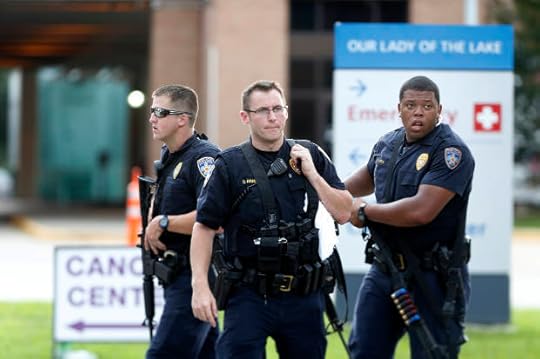
Police guard the emergency room entrance of Our Lady Of The Lake Medical Center, where wounded officers were brought, in Baton Rouge, La., Sunday, July 17, 2016. Multiple law enforcement officers were killed and wounded Sunday morning in a shooting near a gas station in Baton Rouge, less than two weeks after a black man was shot and killed by police here, sparking nightly protests across the city. (AP Photo/Gerald Herbert) (Credit: AP)
Three law enforcement officers were killed and three others wounded Sunday morning in a shooting at a gas station in Baton Rouge, less than two weeks after a black man was shot and killed by police here.
One suspect in the shooting was killed and authorities believe two others might still be at large, said Casey Rayborn Hicks, a spokeswoman for the East Baton Rouge Sheriff’s Office. The city was on high alert, officials said.
The shooting was the fourth high-profile deadly encounter in the United States — and second in Baton Rouge — involving police over the past two weeks. The violence has left 12 people dead, including eight police officers, and sparked a national conversation over race and policing.
The races of the suspects and the officers in Sunday’s shooting were not immediately known.
The shooting began just before 9 a.m., at a gas station on Airline Highway, less than 1 mile from police headquarters, police said. The slain shooter’s body was next door, outside a fitness center. Police said they were using a specialized robot to check for explosives near the body.
Rest assured, every resource available to the State of Louisiana will be used to ensure the perpetrators are swiftly brought to justice,” Edwards said in a statement.
On Sunday afternoon, more than a dozen police cars with lights flashing were massed near a commercial area of car dealerships and chain restaurants on Airline Highway, not far from police headquarters. Police armed with long guns stopped at least two vehicles driving away from the scene and checked their trunks.
That area was about a quarter of a mile from a gas station where almost nightly protests had been taking place against the recent police shooting.
Five law enforcement officers were rushed to Our Lady of the Lake Regional Medical Center, hospital spokeswoman Ashley Mendoza said. Of the two who survived the shooting, one was in critical condition and the other was in fair condition. Multiple police vehicles were station at the hospital and a police officer with a long gun was blocking the parking lot at the emergency room.
That area was about a quarter of a mile from a gas station where almost nightly protests had been taking place against the recent police shooting.
Five law enforcement officers were rushed to Our Lady of the Lake Regional Medical Center, hospital spokeswoman Ashley Mendoza said. Of the two who survived the shooting, one was in critical condition and the other was in fair condition. Multiple police vehicles were station at the hospital and a police officer with a long gun was blocking the parking lot at the emergency room.
Requiem for the backpacker: Today’s youths risk missing out on the joys of spontaneous travel
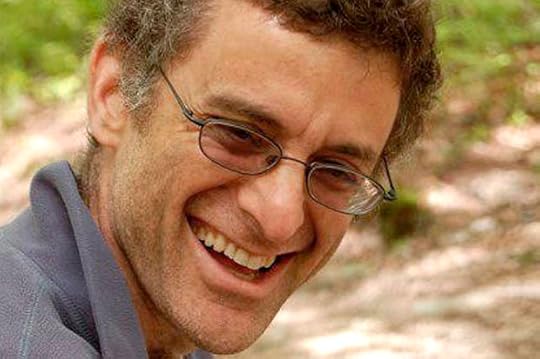
A photo of the author.
Thirty years ago, I backpacked around the Greek island of Crete. I returned there last week, finding it pretty much the way I remembered it: rugged, sun-bleached and beautiful.
There was only one thing missing: the backpackers. I didn’t see anyone who looked as scruffy as I did back then, toting a sleeping bag and a few other essentials from one dingy hostel to another. Every tourist was carrying a suitcase, suggesting that they were staying in actual hotels. And they were almost surely showering more than I did in my backpacking days, which was . . . almost never.
Is that a bad thing? Not if you were one of the poor unfortunates who had to sit next to me on a long bus ride, I suppose. But I do think there are some good reasons to miss international backpacking, which is on the wane everywhere. If you don’t know where you’re going to find your next bed—or your next meal—you experience the world in a very different manner.
First of all, you’re thrown into tight quarters with others. When you have your own room, you can retreat to it whenever you want. But if you’re assigned a bunk alongside strangers in a hostel, you don’t have that choice. And they won’t be strange for very long.
I met people from all over the world that way, in more intimate ways than tourists do today. You might run into the same people at different places, of course, but you probably won’t do more than exchange niceties with them. They’re on their trip, after all, and you’re on yours.
Second, backpacking was typically far less planned than traditional suitcase travel. Especially with the rise of the Internet, you can know your exact destination many months before you get there. So there’s a loss of serendipity, those weird and unpredictable experiences that you only have when you don’t know what’s coming next.
During my backpacking years, I met people on the road who invited me to stay in their homes. I took long detours from my imagined itinerary, when I heard about a can’t-miss city or national park. Once, in India, I ended up on the wrong train and went hundreds of miles out of my way. But it was alright, because I saw parts of the country that I wouldn’t have experienced otherwise.
Most of all, we backpacked simply for the experience. We weren’t trying to change the world. We simply wanted to see as much of it as we could, on whatever small sums we had saved.
That gave us a freedom that typically isn’t available to young people today. Many corners of the globe have become far more dangerous for Westerners to visit on a shoestring, especially if they’re female. Since the economic crisis of 2008, it’s also been much harder for young people to find the money for a long trip.
And they’re justifiably worried about finding employment when they get home. College students, especially, see summer as an opportunity to build up their c.v.’s. A backpacking trip, with no other purpose or credential? How would you explain that in a job interview?
Even in countries where post-high school “gap years” are common, like Australia and the United Kingdom, long-term backpacking has been plummeting. “The concept of bumming around the world for a couple of years has been replaced by the reality of funding those trips and the fear of giving up a job,” observed the chairman of the Australian Youth Tourism Advisory Council, back in 2012.
Two years before that, the head of the UK’s national college admissions service declared that the “golden age” of gap-year backpacking was over. As university admissions became more competitive, she noted, young people were increasingly using that time “in a focused way to support an application to the course or the university you are targeting.”
But the decline of backpacking reflects important changes in aesthetics, not just in economics. Now that everything can be recorded on cellphones and beamed immediately to the Net, so-called “flashpackers” post pictures of the cool-looking hotel or restaurant they’re patronizing. Who would ever share shots of the hell-holes where I stayed? (And, most of all, who would “like” them on Facebook?)
According to a 2012 study by the World Youth Student and Educational Travel Confederation, growing fractions of young travelers today go overseas as part of a charitable or academic endeavor. As an academic myself, I’m delighted that more people want to study abroad. But I still think they’re missing an important set of experiences that my generation enjoyed.
I just arrived in Ghana, where—yes—I’m teaching a study-abroad course. And I’m also carrying a suitcase, not the backpack I hauled around the world three decades ago. But I always encourage my students to bring their own packs, in the hope that they’ll do some exploring when the class is over. They’ll learn a lot more on their own than they ever will from me.
The myth of the Democratic rift: Despite media hot air, the data show Sanders supporters will embrace Clinton

(Credit: Reuters/Jim Urquhart)
Bernie Sanders has bowed out of the Democratic primary race and endorsed Hillary Clinton. Yet, some questions remain about whether Sanders supporters will embrace Clinton (some pundits, including Paul Krugman, suggested that Sanders would not support Clinton). Incidents like Susan Sarandon’s ambiguous comments about possibly supporting Trump (or not voting at all) raised many eyebrows.
In the Daily Beast, Christopher Ketcham argued there is a significant contingent of Bernie supporters itching to vote for Trump (though the only one he could get on record was a friend of his living in Brooklyn). Increased use of Twitter among journalists and pundits has exposed them to more extreme positions, which they then project onto broad groups of people. Some have suggested “Bernie Bros,” a term of derision aimed at a group of leftist Bernie supporters who harbor misogynistic and racist views, represent Sanders supporters in general and may vote for Trump in large numbers (Trump has also courted Bernie supporters).
However, more data-driven approaches often fail to support these narratives. Data don’t show widespread misogynistic attitudes among Bernie Sanders supporters, nor do they suggest widespread racial resentment or stereotyping. Moreover, I find that there are strong reasons to believe Sanders supporters will ultimately reject Trump, and most will end up supporting Clinton. Despite hot takes suggesting otherwise, the Democratic Party is currently quite unified, and there is no evidence the Bernie supporters will support Trump en masse.
Bernie Supporters Don’t Like Trump
The American National Election Studies 2016 pilot study allows us a unique opportunity to explore whether Bernie supporters would back Trump: it asks respondents both which Democratic and Republican candidate they prefer (with the option to choose none). For the purposes of the analysis explored here, I only examine respondents who choose either Bernie or Hillary and consider themselves either Democrats or Independents (throughout the whole piece). That’s because the fact that respondents are asked which Democratic or Republican candidate they would support regardless of party could distort results (if a large number of Republicans preferred Sanders to Clinton). The goal is to analyze whether Democrats and Independents who support Bernie will end up supporting Trump.
A large share of Clinton and Sanders supporters said they would support “none” of the Republicans (42 percent of both Clinton and Sanders supporters selected this option). Only 9 percent of Sanders supporters selected Trump (compared to 12 percent of Clinton supporters). Sanders supporters were more supportive of Rand Paul (12 percent) and Clinton supporters of Jeb Bush (13 percent). Another way to explore the issues is to examine what are called “feeling thermometer” scores. Respondents are asked to place themselves on thermometer between 1 and 100, with 1 being the coldest and 100 being the warmest. Examining Bernie and Hillary supporters who identify as either Democrats or Independents, I find that the mean feeling thermometer score for Trump is 23 for Clinton supporters and 18 for Sanders supporters (not a statistically significant difference). That is, both Clinton and Sanders supporters have cold feelings towards Trump.
Bernie Supporters Are Committed To Anti-Racism
One reason that Bernie supporters will hesitate to support Trump is his racist style of politics. White Sanders supporters in the ANES dataset had lower scores on the resentment scale and stereotype scale (indicating that they are less likely to endorse stereotypes or racial resentment) than white Clinton supporters. An analysis of ANES performed by political scientist Jason McDaniel and provided to Salon suggests that these results remain after controlling for other relevant variables. The fact that Sanders supporters tend to be younger could explain the difference (with Ashley Jardina, I showed that younger people are more progressive on issues related to race).
Other sources support the idea that Sanders supporters are more racially liberal: a Reuters poll of more than 7,800 respondents suggests that Bernie supporters are less likely to endorse racial stereotypes than Clinton supporters and Republicans (the results are similar for both the full sample and among only white respondents). The biggest difference was on the question of whether black people are more “criminal” than whites, where 32 percent of Clinton supporters rated black people as more criminal compared to 25 percent of Sanders supporters.
These data belie the notion that Bernie supporters are somehow uncommitted to anti-racism. Further, these data make it incredibly unlikely that large number of Trump supporters will support a campaign that has stretched the bounds of racism in political discourse. Pundits who compare Trump and Sanders are doing their readers a deep disservice and should stop.
Democrats Are More United Now Than in 2008
By historical standards, the primary was not extraordinarily bitter. Sanders refused to go after Clinton on potential scandals (such the e-mail scandal, which he publicly denounced) and rather ran a campaign to push the Democratic party to the left on issues with broad popular support. Indeed, Sander’s endorsement signals a level of party unity that has occasionally evaded Democrats. In 1992, Jerry Brown called Bill Clinton the “prince of sleaze” and refused to endorse Clinton, even after clearly losing the primary. In 1972 the party was openly divided about McGovern, and he ended up being crushed. Though it has quickly slipped into the memory hole, the 2008 primary was quite vicious, and many Hillary supporters refused to support Obama in the general.
Indeed, the relatively low levels of support among Bernie supporters for Trump signal far more party unity among Democrats than existed in the past. Using the Cooperative Congressional Election Study 2008, I find that 24 percent of those who reported voting for Hillary in the Democratic primary supported McCain in the general (74 percent supported Obama). According to polls from Washington Post-ABC News, in May, 20% of those who backed Bernie in the primary would support Trump in the general. By June, that number had fallen to only 8%. For comparison, in June of 2008, 20% of those who supported Clinton in the primary said they preferred McCain over Obama in the general.
YouGov data provided to me by polling analyst Will Jordan suggests that support for Trump among Sanders supporters has remained in the low teens, with a high of 18 points and a low of 9. The bigger worry would be that Bernie supporters might support a third-party candidate. Over the last two months about a third of Sanders supporters have supported a third party candidate (or “someone else”). However, as Sanders begins to campaign for Clinton, these numbers will likely dwindle. Pew Research Center data suggest a similar number for Trump support: 9 percent of Sanders supporters say they would support Trump (on the GOP side, 14 percent of those who did not support Trump in primary said they would support Clinton in the general).
Take policy debates: On a battery of issues, including the minimum wage, upward mobility, the environment, inequality and even birth control, Sanders supporters have more liberal views than Clinton supporters (see chart). The evidence, at least from ANES, does give us reason to believe that Bernie supporters are indeed more progressive than Hillary supporters, but these difference are quite modest, and far less important than the differences between Democrats and Trump.
Conclusion: The Future is Bright
Those on the progressive left (as I am) should be thankful that Sanders’ run has pulled the Democratic Party to the left on key issues such as the public option, the minimum wage and Social Security. On all of these issues, Sanders did not pull the Democratic Party away from public opinion, but closer towards it. As political scientist Dan Hopkins notes, Bernie has become a voice not just for anti-establishment politics, but of a real and increasingly large progressive movement within the Democratic Party. However, Democrats to the right of Sanders also have things to be grateful for. Sanders’ critiques can help the party strengthen its policy positions. He has brought renewed vigor to the party and energized a new generation of voters.
As I’ve argued, the Democratic Party has moved left in ways that are consistent with public opinion and could help them mobilize single women, Latinos, African-Americans and young people, key constituencies. Partisan preferences tend to be sticky (research suggests partisan identification persists over a long time) so young people drawn to Bernie will likely stay in the Democratic Party for a long time. Young people vote at incredibly low rates, so if Sanders brings them out to the polls, he’s done a huge service for Democrats. Finally, political scientist Gabor Simonovits finds that, “the introduction of extreme alternatives into the public discourse makes mainstream policies on the same side of the spectrum look more centrist in the public eye, thus increasing support for these moderate alternatives.” By introducing a somewhat more radical vision of social democracy to the American stage, Bernie has made more modest incremental change possible.
Many pundits have relied on the unhelpful and offensive trope that Trump resembles Sanders. These takes obfuscate far more than they illuminate, and dismiss a group of young Americans who are incredibly progressive on issues of race, gender and economics. Further, the argument is rooted in the mythology that socialists and leftists don’t have the best interests of progressives or the American people at heart. Though the liberal-left and socialist-left may disagree, it’s absurd to think that large numbers of leftists subscribe to a Leninist, accelerationist view. Rather, most want to pull the country in a more progressive direction. Supporting a racist, misogynistic, warmongering ethno-nationalist won’t do that.
There are things in the primary election to be less than excited about: the tenor of the primary has at many times been divisive, particularly online. However, primaries have always been divisive and by historical standards, the Democratic party is not particularly divided. There are rifts, certainly. But the specter of Trump means that most Democrats take the position, “the enemy of my enemy is my friend.” It is incredibly unlikely that Bernie supporters will vote for Trump en masse. It’s unhelpful and lazy to suggest they will.


